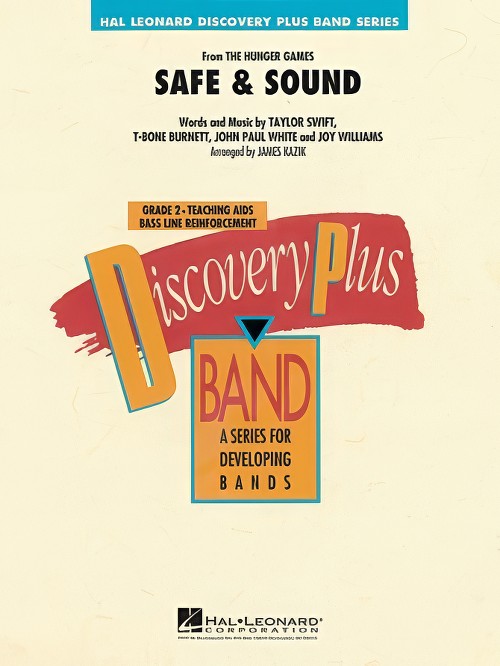Results
-
£87.50
Sound Prisms - Brian Balmages
This exciting, new fanfare combines traditional, triadic harmonies with splashes of mild and harsh dissonance, especially in the woodwind voices, in a driving 6/8 panorama of sound. The patterns and phrases are heard echoing throughout the full ensemble in an avalanche of changing timbres. The piece builds to a powerful and memorable conclusion. Premiered at the CBDNA Southern Conference in Atlanta, Georgia, 2002.
Estimated dispatch 7-14 working days
-
 £61.95
£61.95Storm Chaser - Kevin Mixon
Off in the distance we hear the storm begin, the thunder roar, and see the the lightning strike as we take off with this dramatic piece, depicting the sounds of a violent thunderstorm. Educator and composer Kevin Mixon gives us a bold new piece that includes the sound of finger snapping (to mimic rain and thunder) to add to the overall effectiveness of this dynamic piece. Students will love the angular, strong melody and will sound great in contest or festival.
Estimated dispatch 7-14 working days
-
 £123.95
£123.95Mars from 'The Planets' - Gustav Holst
This hard-hitting arrangement of Holst's classic from "The Planets" dispenses with any initial build-up and hits you with a wall of sound right from the first note! Probably the most famous classical piece in 5/4 meter, this takes all the powerful impact points and combines them into a massive chunk of sound.
Estimated dispatch 7-14 working days
-
£72.95
Lonestar - Carl Strommen
This lovely original ballad for band is so tuneful that you'll think that it is based upon a folk song. This is the magic of the pieces of Carl Strommen. He has a way of writing memorable melodies and lush harmonies that just sound so right. Lonestar has the sound of an American cowboy song, and it will stretch the musicianship of your young students. We are proud to have this wonderful new piece from Carl Strommen in the Carl Fischer catalog.
Estimated dispatch 7-14 working days
-
 £42.50
£42.50Safe and Sound (from The Hunger Games) (Concert Band - Score and Parts) - Kazik, James
From the movie soundtrack for The Hunger Games, here is a great-sounding arrangement of the hit song Safe & Sound?recorded by Taylor Swift featuring The Civil Wars
Estimated dispatch 7-14 working days
-
 £45.54
£45.54Joyful Is The Morning Sun (Concert Band - Score and Parts)
This exuberant and uplifting chorale by Matt Conaway will make bands of all ages sound fantastic. The melodies are simple and memorable, and the full, rich scoring will help even bands with reduced instrumentation sound warm and complete. An excellent addition to your next concert or festival program.
Estimated dispatch 7-14 working days
-
 £50.50
£50.50Joyful Is The Morning Sun - Matt Conaway
This exuberant and uplifting chorale by Matt Conaway will make bands of all ages sound fantastic. The melodies are simple and memorable, and the full, rich scoring will help even bands with reduced instrumentation sound warm and complete. An excellent addition to your next concert or festival program.
Estimated dispatch 7-14 working days
-
 £42.50
£42.50Safe & Sound (from The Hunger Games) - John Paul White
From the movie soundtrack for The Hunger Games, here is a great-sounding arrangement of the hit song Safe & Sound recorded by Taylor Swift featuring The Civil Wars.
Estimated dispatch 7-14 working days
-
 £37.62
£37.62Dance of the Jester (Concert Band - Score and Parts)
A bright rhythmic piece with a modal sound that's playable with limited instrumentation. You'll love the big energetic sound your youngest students get on this appealing yet very playable number! Perfect for second year bands!
Estimated dispatch 7-14 working days
-
 £44.55
£44.55Faces of the World (Concert Band - Score and Parts)
A delightful march with a truly regal sound. The haunting melody and stately tempo make this a very appealing selection for either contest or concert use and its slightly modal sound is sure to make it a favorite with your students. Another extraordinary young band piece from a very popular composer. A REAL WINNER!
Estimated dispatch 7-14 working days
